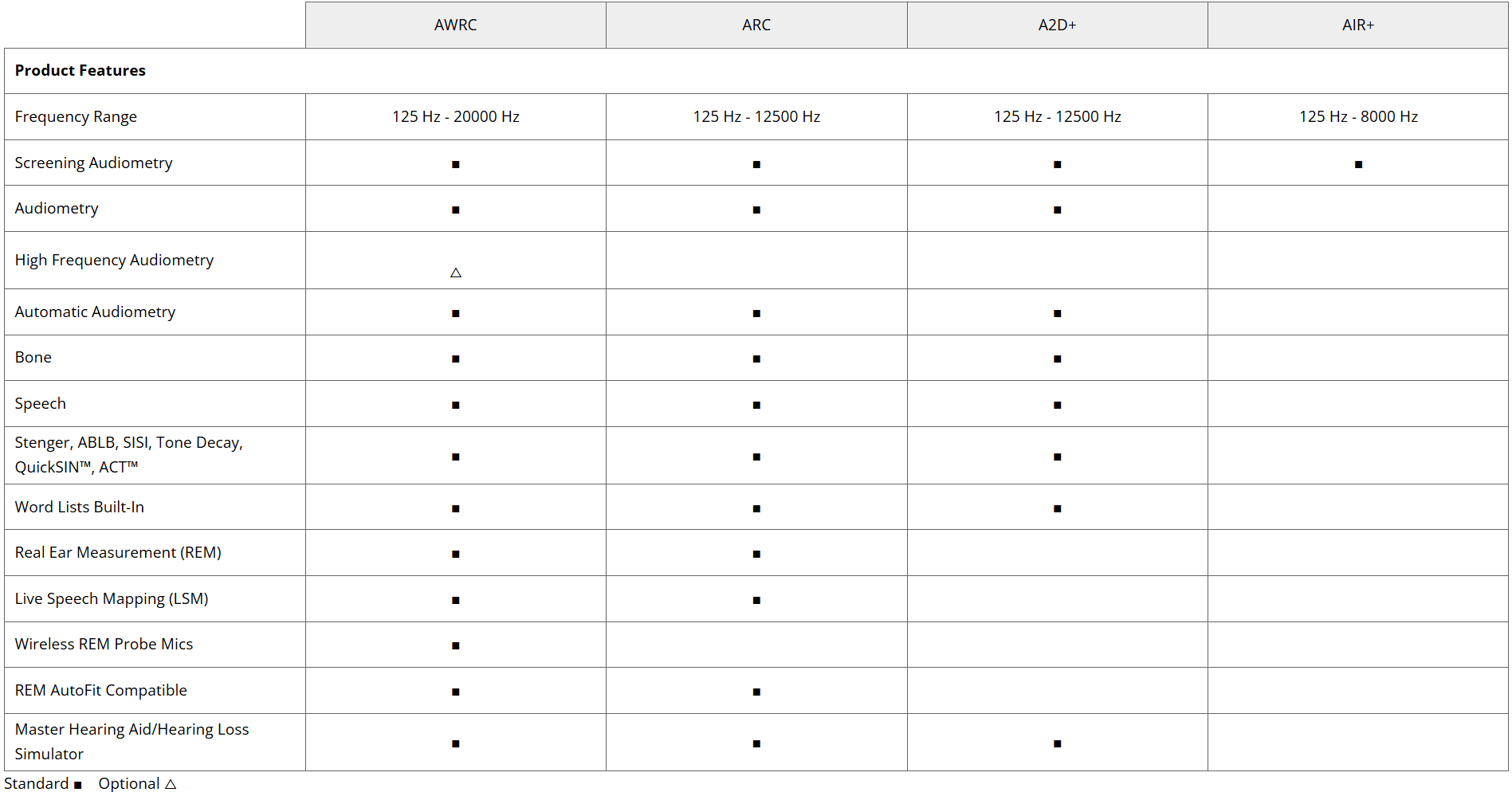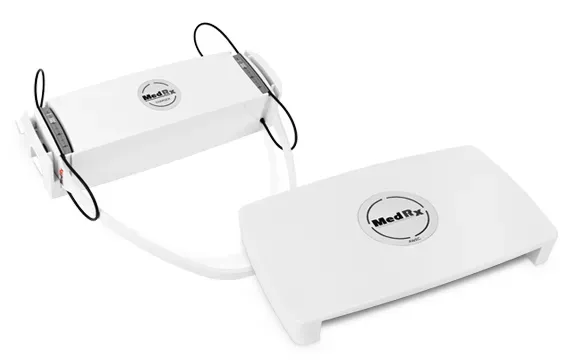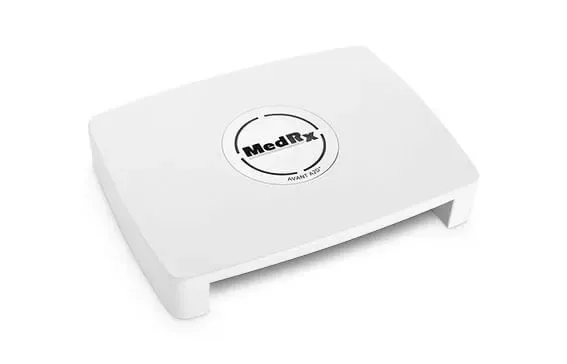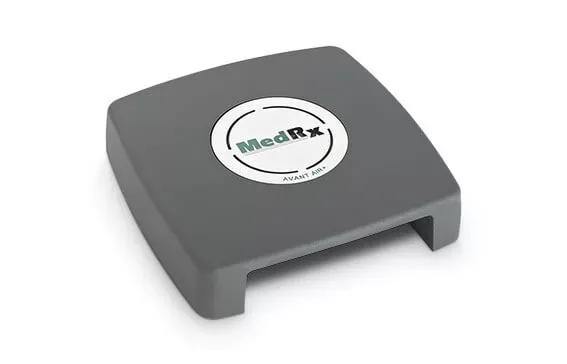MedRx offers 4 Styles of Audiometers
The MedRx audiometers function with a PC and integrate directly with tools to make your office more efficient
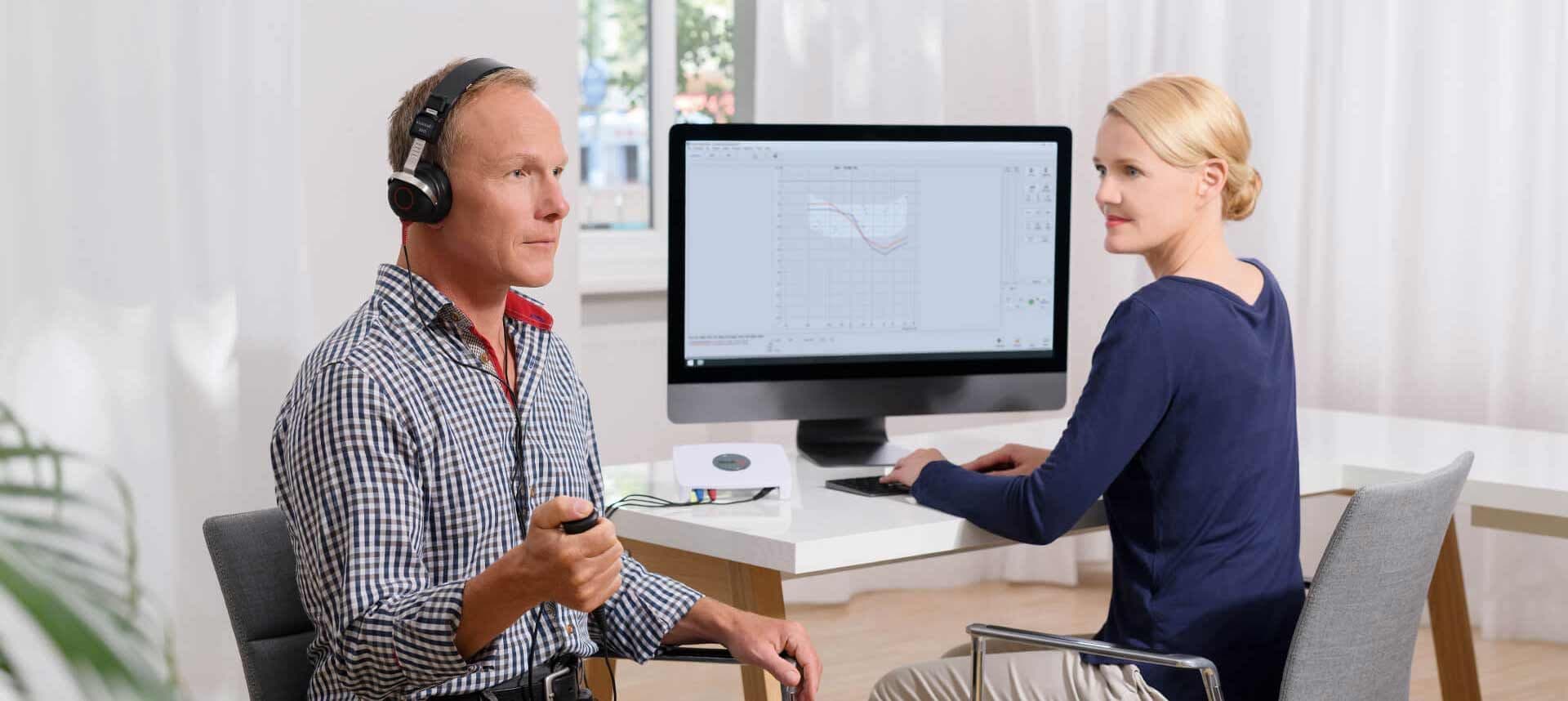
Make the Leap To PC-based Audiometry
MedRx offers 3 portable, PC-based, dual channel audiometers and one screening audiometer.
All MedRx Dual Channel Audiometers feature:
-
Complete Air, Bone, Speech and Free Field Audiometry
-
Built-in Special Tests, Word Lists and Auto-Scoring
-
ACT™ Test - Addresses patient’s complaint - hearing in noise
-
Integrated QuickSIN™
-
Automated Audiometry
-
HLS (Hearing Loss Simulator) & MHA (Master Hearing Aid) for 3rd Party Demonstration
-
PC-based and Portable
-
USB Connection to Computer
-
Noah, TIMS®, Blueprint OMS and Sycle.Net Compatible
FAQ
What Is an Audiometer?
An audiometer is a medical device used by hearing care professionals (HCPs) to determine hearing acuity. Audiometers provide detailed diagnostic information that indicates if a patient has a hearing loss, the severity of the hearing loss, and the type of hearing loss (sensorineural, conductive, or a combination of the two).
Both children and adults can take hearing assessments with an audiometer. Testing for young children may require additional equipment for additional testing procedures such as visual reinforcement audiometry (VRA) or conditioned play audiometry (CPA).
Results from standard audiometric testing are used to fit patients with hearing aids or identify alternative treatment options.
Who Is Qualified to Use an Audiometer?
Trained medical professionals are the only people qualified to perform testing with an audiometer. These include audiologists, ear, nose, and throat physicians (ENTs), hearing aid dispensers, and hearing instrument specialists.
They may operate out of many different settings, including:
• Hospitals
• Clinics
• ENT offices
• Military
• Government
• Schools
Local laws can more specifically identify who is eligible to conduct audiometric testing.
Types of Audiometers and Where They’re Used
Audiometers can vary widely in appearance and operation style depending on the needs and preferences of the clinicians using it. Manual audiometers use knobs, buttons, and dials to adjust the stimulus presented to the patient. These are generally larger and more cumbersome than computer-based audiometers.
Others use computer-based software to conduct testing. The clinician operates the audiometer using a mouse and keyboard. Both audiometers will present the results necessary to determine hearing loss and treat patients appropriately.
In a hearing clinic or private practice, both manual and computer-based audiometers are common, though computer-based models are becoming more prevalent. In these offices, the audiometers can be used in conjunction with an audiometric booth or stand alone in a quiet office. Requirements to use a booth will depend on state and local laws.
Because modern, PC-based audiometers are usually lighter, they can also be taken on the go for portable testing. Some specialized portable audiometers allow HCPs to use them with traveling clinics, health fairs, and school events.
What Components Make Up an Audiometer?
An audiometer usually consists of two main parts; the hardware unit conducting the testing and the transducers used to present the stimuli to the patient. PC-based audiometers will also include audiometry software.
The transducers plug directly into the audiometer. The HCP can use headphones or inserts for pure tone audiometry, depending on personal preference. When performing bone conduction audiometry, a bone conductor headband transducer is required.
All audiometers operate under strict technological standards that require regular calibration and the ability to perform necessary testing. Criteria for the U.S. are listed under ANSI (American Standard Specification for Audiometers) S3.6, while international standards are regulated by the IEC (International Electrotechnical Commission) 60645.
How Does an Audiometer Work?
An audiometer’s core functions include performing air conduction (pure tone audiometry), bone conduction audiometry, masking, and speech testing.
When administering an air or bone conduction test, it is required for the HCP to test for both level and frequency of loss. These tests involve the provider playing a stimulus at increasingly lower decibel levels and higher frequencies to determine a patient’s hearing range. In frequency-specific testing, the stimuli presented may be pure tones, warble tones, or narrowband noise.
Testing will produce a graphic representation of the patient’s results known as an audiogram. An audiogram shows the patient their hearing sensitivity at different levels and frequencies. HCPs will also refer to the audiogram when recommending a course of treatment and fitting for hearing aids.
What are Audiometers Used For?
Audiometers are designed to evaluate hearing sensitivity across the speech frequency range. Audiometers can present pure tones, warble tones or narrowband noise during the frequency specific testing. Audiometers use a combination of air conduction and bone conduction to determine the type and severity of hearing loss in a patient. The combination of air conduction and bone conduction will help the practitioner determine if the hearing loss is sensorineural, conductive or mixed.
Sensorinerual hearing loss – Sensorineural hearing loss, or SNHL, happens after inner ear damage. Problems with the nerve pathways from your inner ear to your brain can also cause SNHL. Soft sounds may be hard to hear. Even louder sounds may be unclear or may sound muffled.
Sensorineural Hearing Loss
(asha.org)
Conductive Hearing Loss - when sounds cannot get through the outer and middle ear. It may be hard to hear soft sounds. Louder sounds may be muffled.
Conductive Hearing Loss
(asha.org)
Mixed Hearing Loss – A combination of a conductive and sensorineural hearing loss
What are the Types of Audiometers?
MedRx offers 3 types of Audiometers; Clinical, Diagnostic, Screening.
A screening audiometer typically uses Pure Tone audiometry to perform a basic air conduction test only. A screening audiometer is used to indicate if a loss of hearing has occurred and may indicate standard threshold shifts over time.
A diagnostic audiometer measures air and bone conduction threshold levels with some diagnostic audiometers additionally measuring speech threshold levels. Diagnostic audiometers will indicate specifically where hearing loss has occurred.
In short, a screening audiometer will only tell you if there’s a hearing issue, whereas a diagnostic audiometer will identify the hearing issue.
Screening audiometers are typically used in occupational health, schools, general practice or pediatric practices. If the screening test indicates a moderate to severe loss of hearing, a hearing professional or ENT should perform a hearing test using a diagnostic audiometer.
Clinical audiometers do all of the above but they also allow the use of special testing protocols on infants and young children.
Why choose MedRx Audiometers?
MedRx is known for our top tier customer service, support and training. The MedRx audiometers are controlled through software which allows our support staff to assist practitioners remotely. This allows us to provide assistance within minutes of your clinic discovering an issue. Most support questions are quickly resolved to allow customers to continue working through their schedules. The software-based controls also allow us to complete trainings online using the equipment in your office. This allows for less downtime and practical training with your audiometer. Call our office and experience the difference you will get with MedRx.
MedRx also provides the highest quality audiometers which exceed ANSI and IEC requirements for testing.
How often do Audiometers Need to be Calibrated?
Audiometer calibration shall be checked acoustically, at least annually. The equipment necessary to perform these measurements is a sound level meter, octave-band filter set, and a National Bureau of Standards 9A coupler. In making these measurements, the accuracy of the calibrating equipment shall be sufficient to determine that the audiometer is within the tolerances permitted by American Standard Specification for Audiometers, S3.6-1969.
(osha.gov)
What Frequency Range do your Audiometers Reach?
MedRx audiometers have varying capabilities. In general, we have audiometers that can test from 125 Hz up to 20,000Hz through air conduction testing.
Compare Product Features
